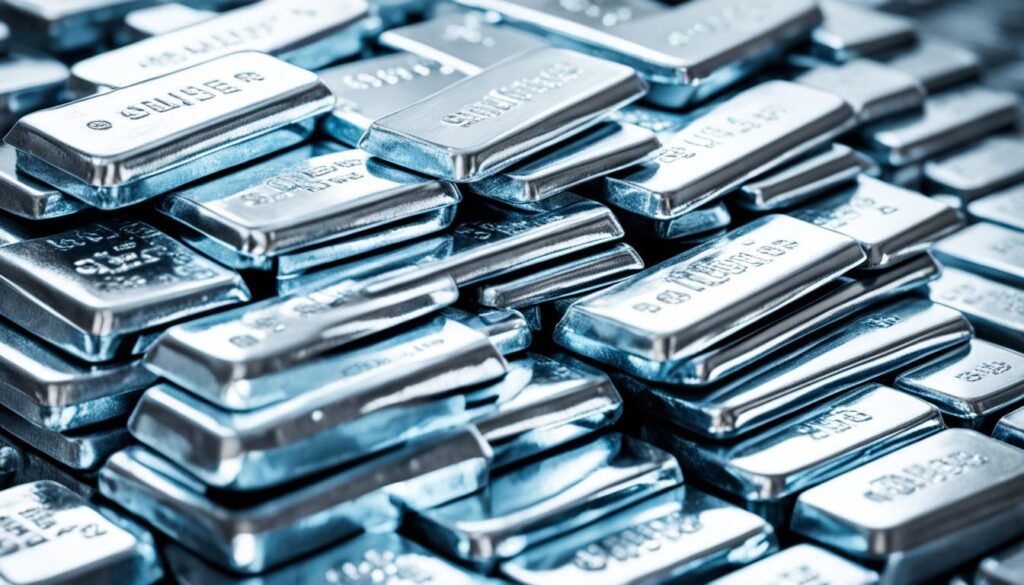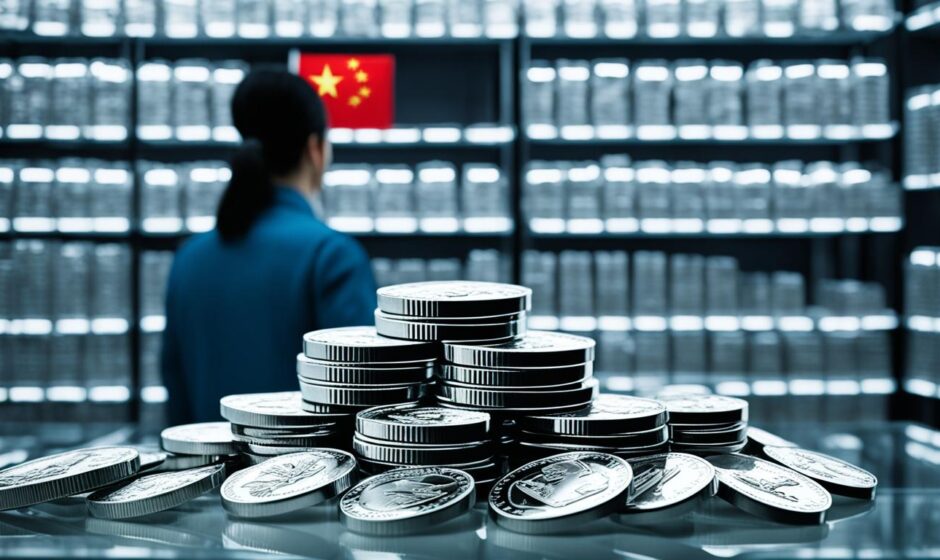The Chinese government has recently instructed its citizens to accumulate silver instead of gold. This strategic move is seen as a potential shift in global economics. In the past, the government had advised its people to stack gold as part of their economic warfare strategy. However, the recent surge in the price of gold, along with the manipulation of silver prices by Western organizations, has made silver a more attractive investment option.
The ChinaAMC CSI SH-SZ-HK Gold Industry Equity ETF, which owns gold companies, saw a halt in trading as its price surged and fell. This increase in demand for gold and silver is also fueled by the lack of alternatives for Chinese investors, as it has become more difficult to invest money outside of China. The Shanghai Gold Exchange has set the price of silver at over $32 per ounce, further driving up the demand for silver in China.
This move is significant for China’s larger population, giving more weight to their silver strategy. With approximately 1.4 billion people compared to the United States’ population of around 333 million, China’s silver stacking strategy holds substantial influence.
China’s strategy of accumulating silver and gold carries implications for global economics and the dominance of the US dollar. It is believed to be part of a larger Chinese-Russian strategy known as “SilverWars,” aimed at eroding the US dollar’s standing on the world stage. By stacking silver and gold, China can now buy more oil using gold, bypassing the use of the US dollar.
The Chinese government’s move to encourage its citizens to accumulate silver and gold showcases their desire to park money in sectors that are relatively immune to a struggling economy. This strategic shift may have long-term effects on the global economy and the role of the US dollar.
China’s Larger Population Gives Silver Strategy More Weight
China’s significantly larger population of approximately 1.4 billion people compared to the United States’ population of around 333 million gives more weight to the Chinese government’s strategy of urging its citizens to accumulate silver.
The government’s previous orders to stack gold were aimed at countering the manipulation of silver prices by Western organizations, who have executed and promoted shorts on silver. Despite the dwindling silver inventory, the price of silver has been manipulated for decades.
With the recent surge in the price of gold and silver, silver mining companies have seen a massive return. Silver is also historically undervalued compared to gold. The Shanghai Gold Exchange has set the price of silver at over $32 per ounce, acting as a magnet for pulling up silver prices in the West.
This strategic move by the Chinese government is seen as a way to diversify holdings with commodities and foreign ETFs.

China’s Silver Strategy: The Potential to Reshape Global Markets
China’s silver strategy not only has implications for its own economy but also has the potential to reshape global markets. By encouraging its citizens to accumulate silver, the Chinese government is actively challenging the dominance of the traditional gold market and the manipulation of silver prices by Western organizations.
With its large population and growing demand for silver, China has the capacity to influence global silver prices and potentially disrupt the established dynamics of the market. This shift towards silver stacking aligns with China’s ongoing efforts to diversify its investments and reduce its dependence on the US dollar.
The Chinese government’s silver strategy is part of a broader trend in which nations are seeking to secure their economies against geopolitical uncertainties and market fluctuations. As the second-largest economy in the world, China’s strategic moves in the silver market have the potential to impact global economics and the balance of power among nations.
Implications for Global Economics and US Dollar
The Chinese-Russian strategy of accumulating silver and gold is more than just a mere investment move; it has profound implications for the global economic landscape and the dominance of the US dollar. Termed “SilverWars,” this strategy aims to erode the standing of the US dollar on the world stage and reshape the balance of power.
By strategically stacking silver and gold, China is actively diversifying its currency reserves and seeking alternatives to the US dollar. This allows them to purchase oil using gold, effectively bypassing the traditional reliance on the US dollar. This move has the potential to disrupt the global oil trade and weaken the US dollar’s grip on the global economy.
Furthermore, the Chinese government’s encouragement of its citizens to accumulate silver and gold showcases their desire to protect their wealth in sectors that are relatively immune to the uncertainties of a struggling economy. This strategic shift not only safeguards their financial interests but also bolsters their economic resilience in the face of challenges.
However, the Chinese-Russian strategy of stacking silver and gold is not without controversy. Western nations, including the United States, fear that this trend may spread and undermine the stability of their own economies. The discussions surrounding the potential banning of TikTok, a popular Chinese app, highlight concerns over the platform’s influence in fueling the frenzy of silver and gold stacking among younger generations.
As the Chinese government continues to prioritize silver and gold accumulation, the long-term effects on the global economy and the role of the US dollar remain uncertain. This strategic move holds the potential to disrupt established economic norms and reshape the dynamics of international trade and finance.
